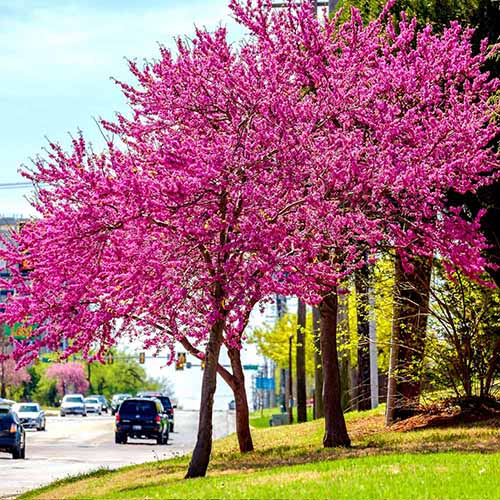Cercis canadensis var. texensis ‘Oklahoma’
There is a whole lot to love about redbuds. Who hasn’t been mesmerized by a tree crowned with a cloak of vibrant reddish-pink flowers? It’s a stunning sight.
Even after the flowers fade, the glossy, heart-shaped leaves are an attractive addition to any garden. Plus, these trees are drought tolerant enough that they’ll even work in xeriscaping.
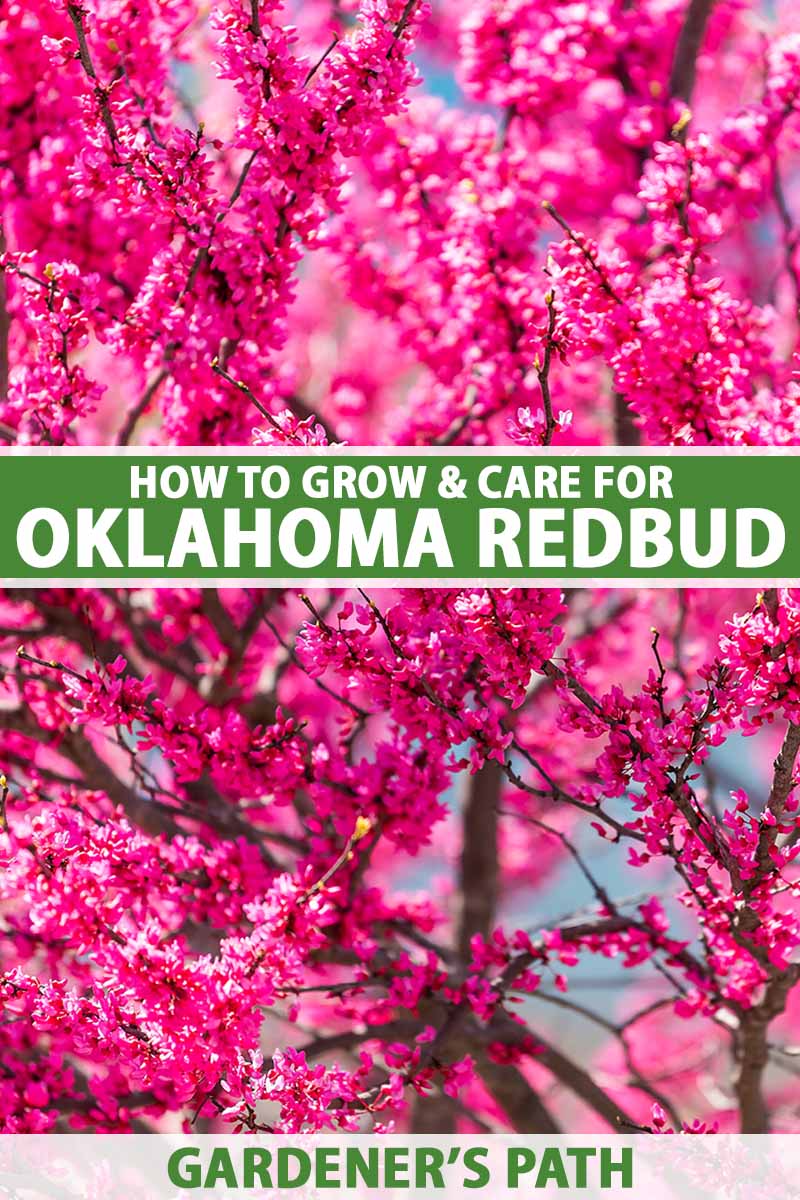
We link to vendors to help you find relevant products. If you buy from one of our links, we may earn a commission.
Now, take all that good stuff and make it just a little bit better. Deeper coloring, glossier leaves, more drought tolerance, and even more flowers, all in a smaller package. Say “hello” to ‘Oklahoma.’
While the eastern redbud is officially the state tree of Oklahoma, unofficially, it’s the lovely ‘Oklahoma’ cultivar that people think of as holding that distinction. You can hardly blame them. I’d want to claim the most fantastic option, too.
This guide will explain the differences between ‘Oklahoma’ and the species, and how to make this particular cultivar thrive in your garden. Here’s what we’re going to discuss:
What You’ll Learn
With all the excellent redbuds to choose from, what makes ‘Oklahoma’ so wonderful? Let’s talk about it.
Cultivation and History
‘Oklahoma’ is a redbud tree from the Cercis genus. ‘Oklahoma’ is often mislabeled as a C. reniformis, but it’s officially a cultivar of the eastern redbud (C. canadensis), specifically the texensis variety.
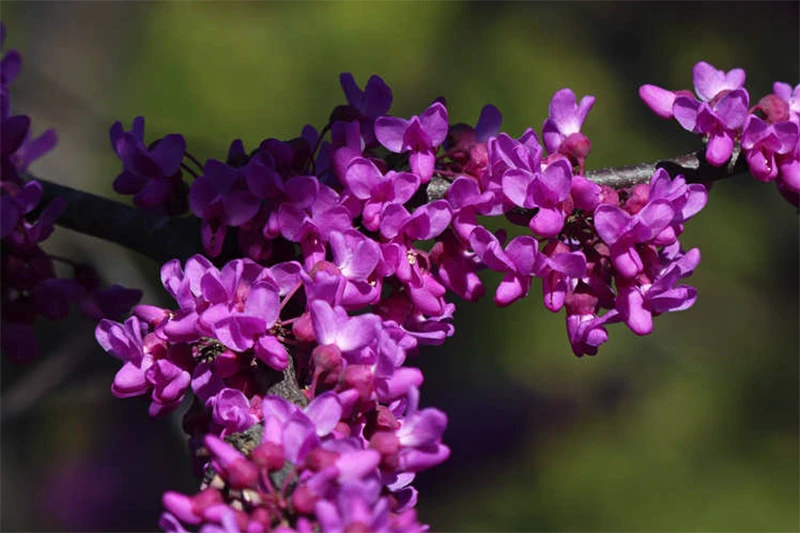
In botanical terms, “variety” means it’s a natural variation of the species rather than one that was cultivated by humans.
For a little background, there are three varieties of the canadensis species. The most common is var. canadensis, which grows all along the Atlantic coast from New Jersey to Texas.
The second is mexicana, which grows in west Texas to northeastern Mexico. Texensis occupies the area of Oklahoma, central Texas, and northeastern Mexico.
Texensis is much more tolerant of heat and drought than its canadensis variety cousin, but it’s pretty similar to mexicana.
In fact, some botanists think the two are simply environmentally-induced morphologies, with the more leathery leaves of mexicana appearing in areas where the landscape is more arid.
‘Oklahoma’ was discovered growing in the wild in the Arbuckle Mountain range in Oklahoma in 1964. It was cultivated, named, and put on the market by Warren & Son Nursery in Oklahoma City in 1965.
The foliage is deeper green and shinier than that of the species, and the flowers have a deeper purple-red hue. It’s one of the earliest blooming eastern redbuds and grows to about half the height and a third of the width of the species.
It reaches about 18 feet tall and 20 feet wide, with a dense, rounded crown. Some have been known to grow up to 25 feet, but it’s not common.
Propagation
‘Oklahoma’ is a pretty fantastic redbud, but it does have one failing.
For whatever reason, the tree just doesn’t lend itself to propagation via cuttings, layering, or grafting. All of these methods generally fail.
Starting seeds is a hit-and-miss proposition, but it’s certainly more reliable than vegetative propagation.
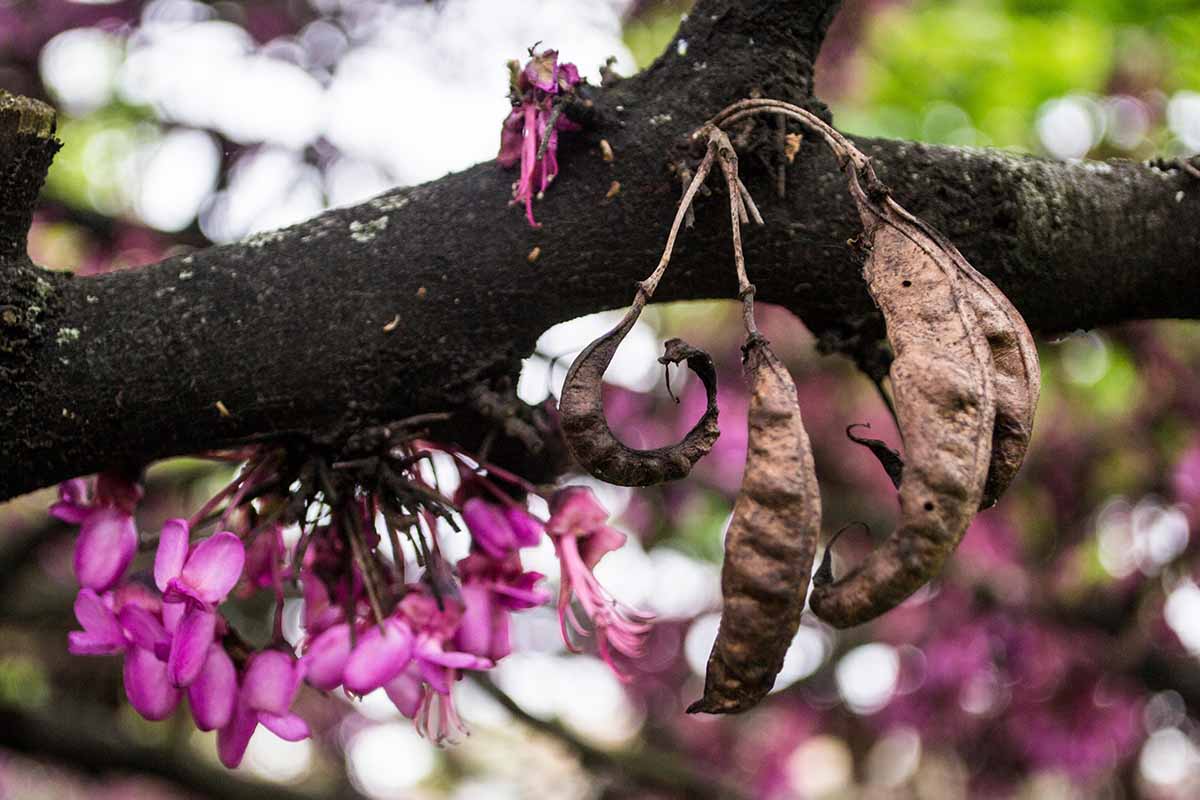
Propagating seeds involves nabbing some from the pods on a mature tree in the fall and then putting them through several months of stratification before planting.
The other option is to transplant purchased saplings or bare roots.
Whichever method you choose, we have a more full explanation of each process in our general redbud growing guide.
Be aware that all redbuds resent being transplanted, so pick your spot carefully and don’t move it once you’ve put it in the ground.
These plants have long taproots that grow deep into the soil in just a few years. Once the taproot becomes established, it will send out secondary roots that can be nearly nine inches long.
How to Grow
‘Oklahoma’ needs well-draining soil, so don’t plant anywhere that has sandy or clay soil unless you amend it well with lots of well-rotted compost.
Heavy clay will cause the taproot to grow horizontally, and the tree will suffer.
Plant the trees in full sun or partial sun. Younger trees can handle partial shade, but as the trees mature, they want more sunlight.
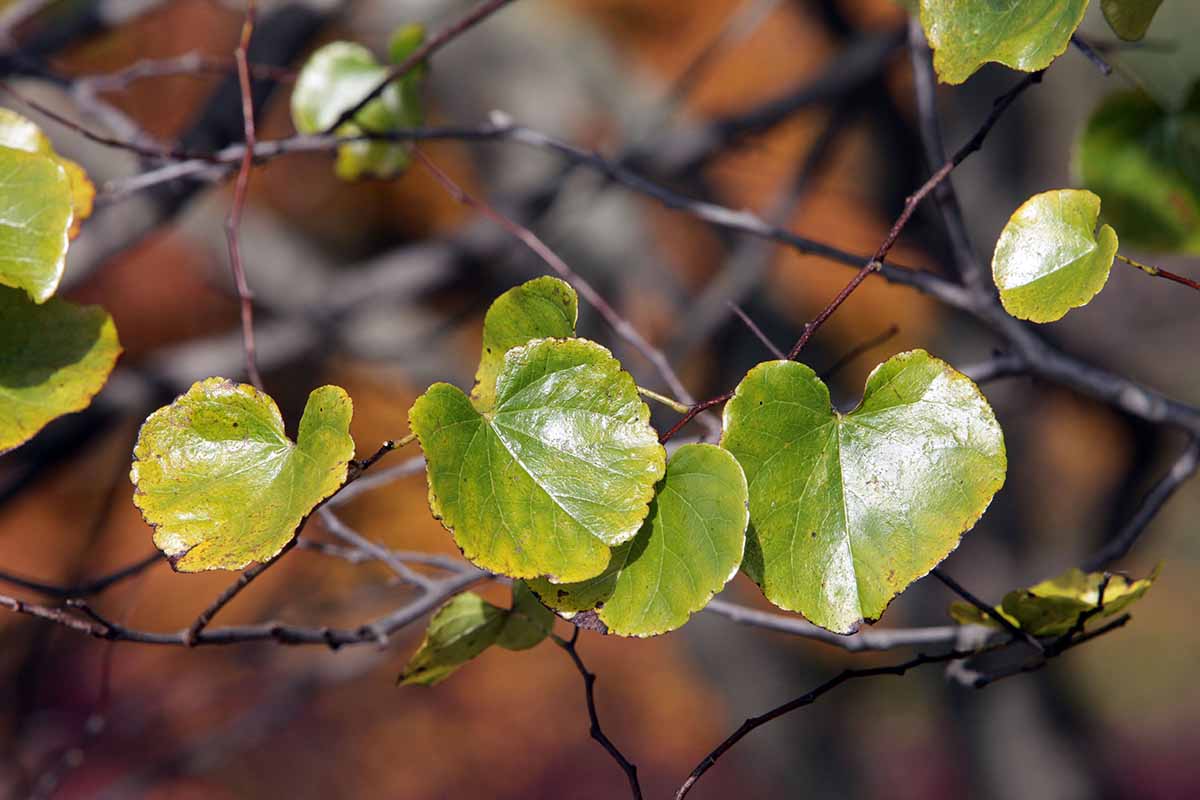
Some people plant their redbuds in heavier shade than is ideal, and the youngster does fine for the first few years. Then, as it matures, it starts to look sad, thin, leggy, and sparse. Eventually, it will likely develop heart rot.
‘Oklahoma’ is pretty adaptable, more so than many other redbuds, but don’t try to test it too much. Give it full sun if you can.
While the deep purple-red blossoms are every bit as beautiful as those of any redbud, this type stands out even more because it tends to have more of them than the species.
It also has exceptionally glossy leaves. It almost looks like someone has taken furniture polish and wiped all the thick, heart-shaped leaves with it. These emerge after the flowers open.
You need to fertilize to promote these blooms and leaves, but the process isn’t a challenge. Once a month during the growing season, feed your tree with a mild, balanced fertilizer.
Something balanced with an NPK of 10-10-10 is just right, or you can use something close to that.
For instance, Pendleton Turf Triple is a reliable option that can be used for all kinds of plants. It’s made from seaweed extracts with healthy amino acids.

Pendleton Turf Triple Fertilizer
Pick up a 32-ounce container at Amazon.
Along with food, the right amount of water is important.
This tree can tolerate more drought than the species, but too much drought and the tree won’t perform as well as it can. When the top three or four inches of soil dries out, it’s time to irrigate.
Water deep and long to provide for that long taproot, and to encourage it to grow down rather than horizontally in search of shallow water.
Growing Tips
- Plant in full sun.
- Plant in well-draining soil.
- Water when the top three to four inches of soil dry out.
Pruning and Maintenance
‘Oklahoma’ youngsters tend to be a bit gangly. We all had our awkward phases, right?
Remove any low-growing branches or competing trunks and prune them to give them a shape that appeals to you.
You might also want to give the tree some training when it’s very young. Tie it to a nearby stake to encourage upright growth.
All redbuds are cauliflorous, which means they bear their flowers on trunks or stems. This is an adaptation that makes it easier for pollinators to access the flowers.
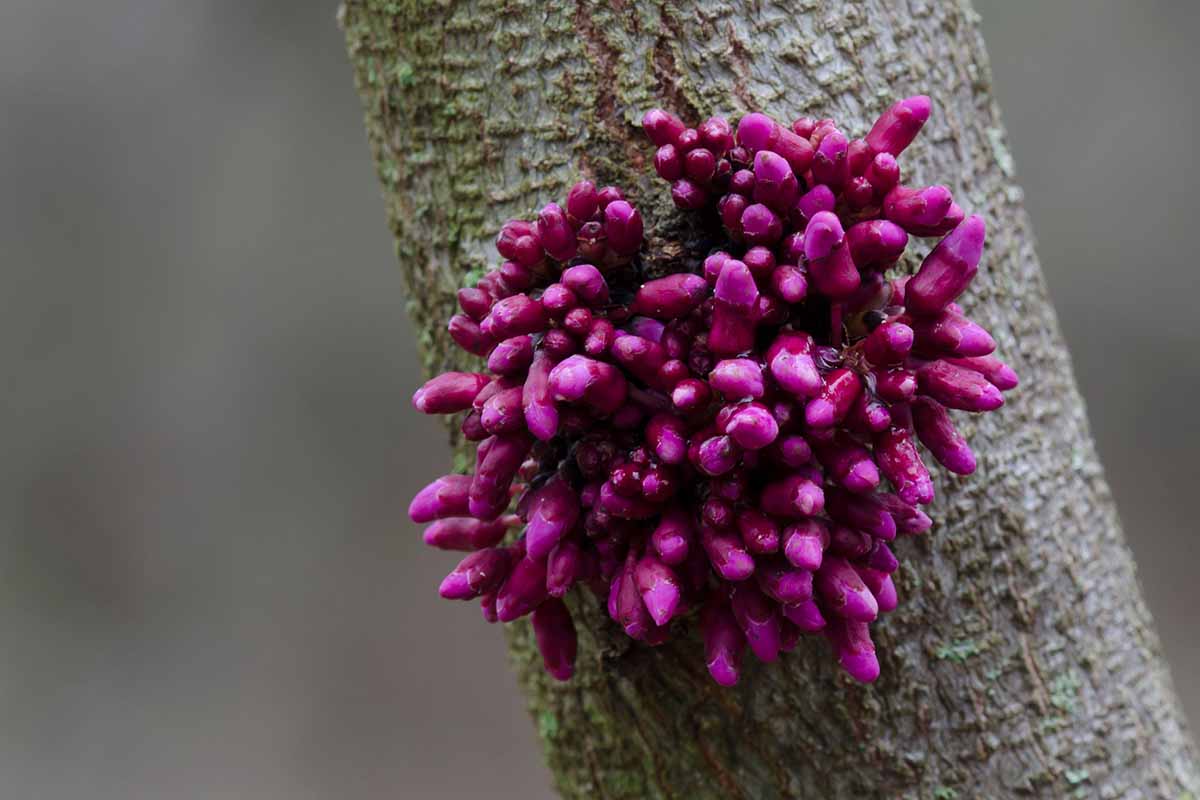
Redbud flowers grow on old wood rather than new growth, which makes pruning all that much easier.
With flowers that grow on new growth, if you prune at the wrong time, you ruin that year’s display. But you probably won’t mess up the floral display on redbuds with inappropriate pruning.
It is easiest on the tree if you prune when it’s dormant in the late winter.
At that time, remove any diseased, dead, damaged, or deformed branches. Any branches that are crossing or rubbing should be removed as well.
Now, take a look at the shape of the tree. Are there any branches that ruin the shape? Get them out of there. Or, does the center look too dense? Thin it out.
Any branches you cut should be removed as close to the nearest branch or trunk as possible.
Where to Buy
‘Oklahoma’ is a popular option, and you can probably find one at a local nursery in your area, or you can grab one from Fast Growing Trees.
They carry four- to five- or five- to six-foot-tall live trees with a one-year warranty.
Managing Pests and Disease
Any pests and diseases that will attack a species redbud will attack ‘Oklahoma.’
Deer and rabbits are going to be your two biggest challenges, but leaf rollers (family Tortricidae), emerald ash borers (Agrilus planipennis), canker, and verticillium wilt are all problems you may encounter.
Our guide to growing redbuds can walk you through how to identify and deal with these problems.
Best Uses
Because of its size, this tree is perfect as a specimen in the garden.
Let it act as a centerpiece for some other bloomers that can add a little extra color to the area, such as bluebells (Hyacinthoides spp.), phlox (Phlox spp.), violets (Viola spp.), and wood lilies (Lilium philadelphicum).
Quick Reference Growing Guide
| Plant Type: | Deciduous, cauliflorous tree | Flower/Foliage Color: | Purple-red/green |
| Native to: | Oklahoma | Tolerance | Drought |
| Hardiness (USDA Zones): | 6-9 | Soil Type: | Sandy, loamy |
| Bloom Time: | Spring blooms/fall foliage | Soil pH: | 6.5-8.0 |
| Exposure: | Part to full sun | Soil Drainage: | Well-draining |
| Time to Maturity: | 10 years | Attracts: | Bees, butterflies, hummingbirds |
| Spacing: | 10 feet | Companion Planting: | Bluebells, phlox, violets, wood lilies |
| Planting Depth: | 1/4 inch (seeds), same depth as container (transplants), roots just below the soil line (bare root) | Uses: | Container, edible, specimen |
| Height: | Up to 25 feet | Order: | Fabales |
| Spread: | Up to 20 feet | Family: | Fabaceae |
| Growth Rate: | Moderate | Genus: | Cercis |
| Water Needs: | Moderate to low | Species: | Canadensis |
| Maintenance: | Low | Variety: | Texensis |
| Common Pests and Diseases: | Emerald ash borers, deer, leaf rollers, rabbits; canker, verticillium wilt | Cultivar: | Oklahoma |
‘Oklahoma’ Trees Have Plenty of Heart
Redbud trees have such eye-catching, vibrant blossoms, and they’ve earned a place in many, many gardens across the country. But ‘Oklahoma’ has all the good stuff and takes it just one step above.

With glossier foliage, more deeply colored flowers and more of them, and higher drought tolerance than the species, it’s all the best of redbuds but just a little bit better.
What appeals to you the most about ‘Oklahoma’? How will you be using it in your garden? Share all the details with us in the comment section below.
Hopefully, this guide gave you the confidence to make your ‘Oklahoma’ redbud thrive.
You might also be thinking about giving your landscape tree some friends. If so, you may find these guides useful:
